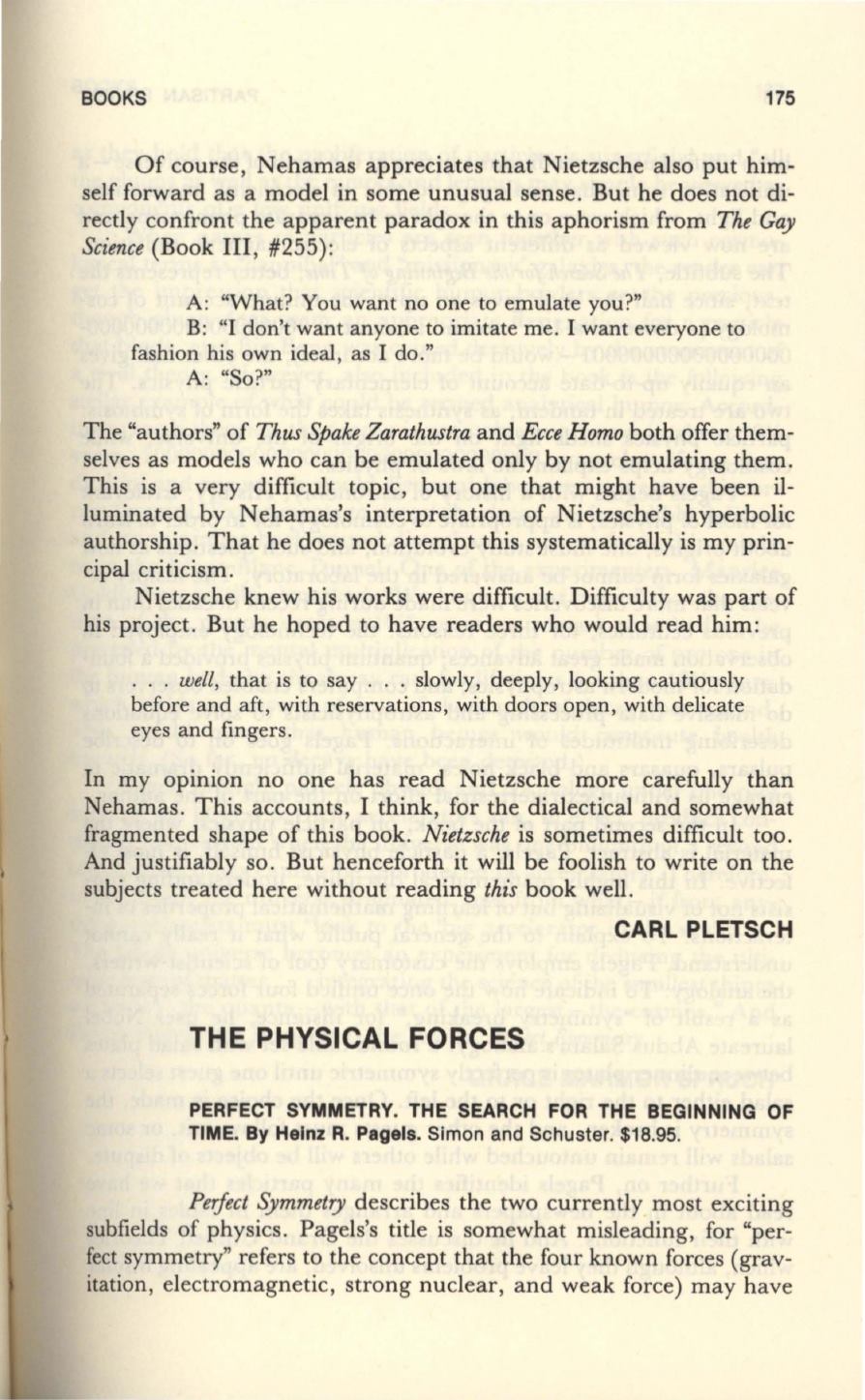
BOOKS
175
Of course, Nehamas appreciates that Nietzsche also put him–
self forward as a model in some unusual sense. But he does not di–
rectly confront the apparent paradox in this aphorism from
The Gay
Science
(Book III, #255):
A:
"What? You want no one to emulate you?"
B: "I don't want anyone to imitate me. I want everyone to
fashion his own ideal, as
I
do."
A:
"So?"
The "authors" of
Thus Spake Zarathustra
and
Ecce Homo
both offer them–
selves as models who can be emulated only by not emulating them.
This is a very difficult topic, but one that might have been
il–
luminated by Nehamas's interpretation of Nietzsche's hyperbolic
authorship. That he does not attempt this systematically is my prin–
cipal criticism.
Nietzsche knew his works were difficult. Difficulty was part of
his project. But he hoped to have readers who would read him:
. . .
well,
that is to say . . . slowly, deeply, looking cautiously
before and aft, with reservations, with doors open, with delicate
eyes and fingers.
In my opilllon no one has read Nietzsche more carefully than
Nehamas. This accounts, I think, for the dialectical and somewhat
fragmented shape of this book.
Nietzsche
is sometimes difficult too.
And justifiably so. But henceforth it will be foolish to write on the
subjects treated here without reading
this
book well.
CARL PLETSCH
THE PHYSICAL FORCES
PERFECT SYMMETRY. THE SEARCH FOR THE BEGINNING OF
TIME. By Heinz R. Pagels.
Simon and Schuster. $18.95.
Perfect Symmetry
describes the two currently most exciting
subfields of physics. Pagels's title is somewhat misleading, for "per–
fect symmetry" refers to the concept that the four known forces (grav–
itation, electromagnetic, strong nuclear, and weak force) may have


